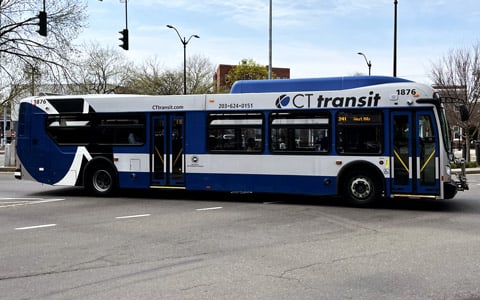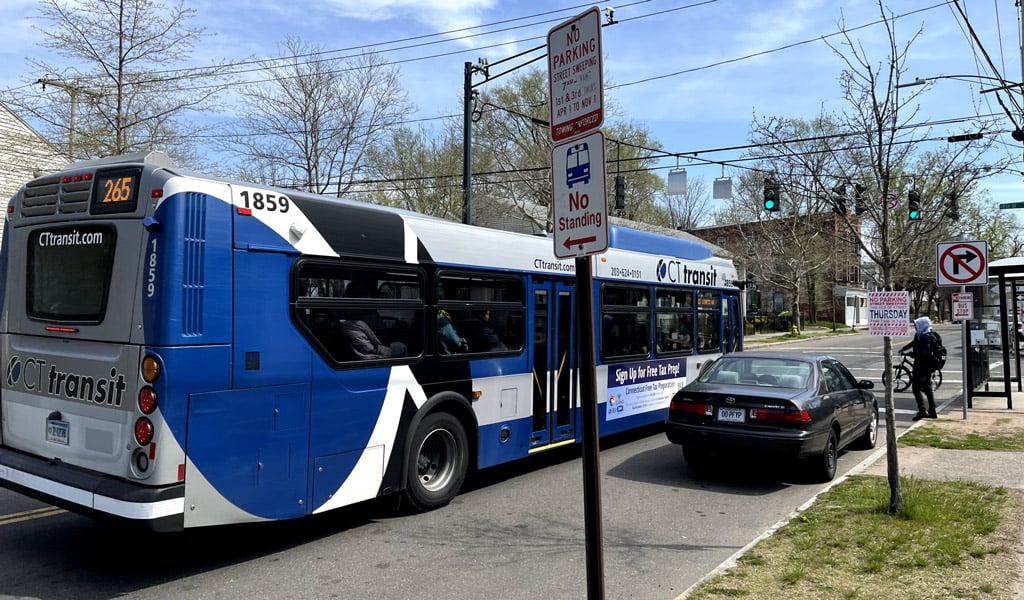
VHB is reimagining public transportation with bus rapid transit (BRT) in the greater New Haven, Connecticut area—soon to be the state’s first on-street BRT system. The new BRT system will introduce major time efficiencies for public transit riders and provide residents living in lower-income areas with enhanced access to New Haven’s job centers.
New Haven has one of the highest percentages of zero-auto households in the state, with just 29 percent of city residents having access to a car. Meanwhile, in the current 15-route New Haven bus system, four routes carry more than half the region’s ridership. These routes make many stops and, as a result, the buses that service them are both extremely crowded and quite slow.
In 2019, VHB evaluated the current CTtransit services in greater New Haven and recommended improvements in the MOVE New Haven Study, a partnership between CTDOT, CTtransit, the City of New Haven, and the Greater New Haven Transit District. In the study, VHB recommended BRT to enhance mobility and provide a more equitable transit system. Now, VHB is supporting those organizations, the City of West Haven, the Town of Hamden, and the South Central Regional Council of Governments (SCRCOG) to implement that very recommendation. VHB recently submitted the 10 percent design to the Connecticut Department of Transportation (CTDOT).
The New Haven region’s new BRT system will feature two BRT corridors—routes that make limited stops as they travel from the far reaches of one side of the city to the other, covering more than 14 miles of roadway. To make the BRT service efficient, dedicated bus lanes in areas of heavy traffic and a transit signal priority (TSP) system for buses at a number of intersections are proposed. The local bus routes will still run, offering flexibility to travelers whose destinations are far from a BRT stop. VHB is currently working with CTDOT and the City of New Haven on a demonstration project that will test the effectiveness and applicability of several cloud-based TSP systems.

The design is informed by an immense data analysis effort, completed by VHB as part of the conceptual design process for the CTDOT BRT project, for which we analyzed more than 2.5 million datapoints on ridership. VHB has identified the location of BRT stops, designated three different size stops and the signage, shelter type, and layout for each, and identified adjustments to the current roadways to accommodate dedicated bus lanes.
The design also incorporates solutions to needs for a fully battery electric BRT bus fleet. This includes considerations for in-line charging at the mobility hubs proposed at the termini of the two routes.
Next, VHB will review the 10 percent design with project stakeholders and make refinements and adjustments. Following this effort will be the National Environmental Policy Act (NEPA) and Connecticut Environmental Policy Act (CEPA) environmental reviews and development of the 30 percent design.
To learn more about the New Haven BRT project, contact David Wilcock by email or on LinkedIn.
Visit our Transit & Rail webpage to learn more about how VHB supports projects like the Greater New Haven BRT system.


